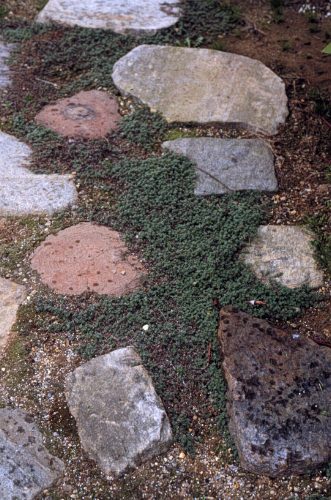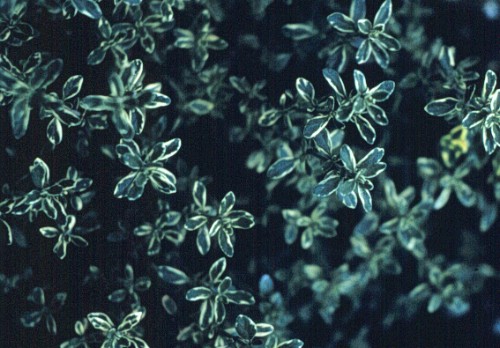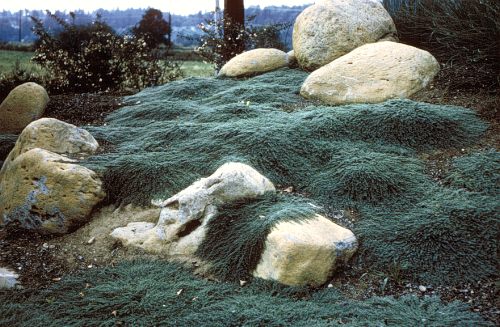Thymus serpyllum
Mother of Thyme, Wild Thyme
Lamiaceae
ExpandHabitat
- native from Europe into Western Asia and then South into northern parts of Africa
- zone 4
- plant has been in cultivation for centuries
Habit and Form
- herbaceous perennial to semi-evergreen subshrub
- prostrate, spreading mat
- spreads by rooting stems
- stem tips point upwards
- slow growth rate
- fine texture
Summer Foliage
- opposite leaf arrangement
- leaves are simple and elliptical
- 0.25" to 0.50" long and 0.12" to 0.25" wide
- gray-green to medium dull green
- short petioles with oil glands
- leaves have no odor
Autumn Foliage
- no fall color
- barely noticeable in winter months
Flowers
- reddish-purple flowers, 0.25" long
- blooms June-September
- flowers bloom in dense heads
- bees are attracted to flowers
Fruit
- not ornamentally significant
Bark
- thin gray string-like stems
- not noticeable in the growing season
Culture
- easily transplanted from containers or division in spring
- best in calcareous, well-drained soil
- full sun
- prefers non-fertile soil
Landscape Use
- bank cover
- rock garden
- ledges
- crevice plant
- ground cover
- edging plant
- with stepping stones
Liabilities
- few in sect and disease problems
- bees are attracted to flowers
- unattractive in winter months
ID Features
- appears as a green mat
- opposite leaf arrangement
- purple flowers
- spreads by rooting stems
- no odor
- petioles have oil glands
Propagation
- by cuttings
- by division
Cultivars/Varieties
'Albus' - This form has white flowers.
'Coccineus' - A selection with showy red flowers, this plant is otherwise similar to the species.
'Roseus' - The blooms on this plant are pink.


